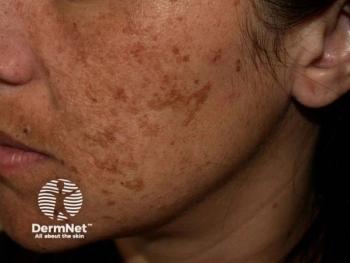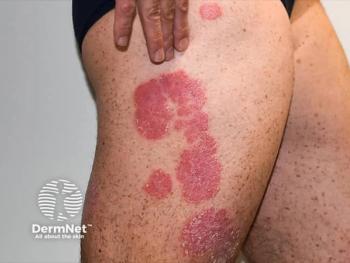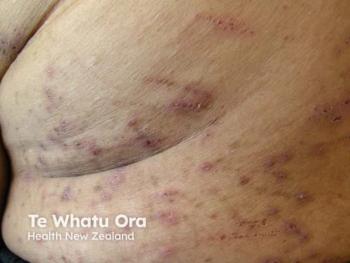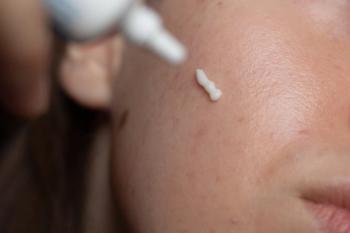
Pediatric AD Disparities in the United States: An Updated Review
Key Takeaways
- Minority children and those from lower-income families face higher AD prevalence, severity, and comorbidities, with reduced access to care.
- Black and Hispanic children are less likely to receive treatments and face barriers in healthcare access and representation in clinical trials.
Recent literature shows that children from racial minority groups with lower-income families have higher disease prevalence but reduced access to care.
A scoping review evaluated current disparities within pediatric atopic dermatitis (AD) in the United States.1 It was found that children from racial minority groups, lower-income families who have public or no insurance, and Southern or rural regions have higher AD prevalence and severity, more comorbidities and hospitalizations, and reduced access to care. Pediatric AD can affect up to 20% of children in the United States.2
The systematic review included literature published from January 2021 to May 2024 on PubMed, Embase, Wiley, and the Cochrane Database of Systematic Reviews. After an initial search yielded over 2000 results, 53 studies met the criteria and were later included. Literature content was categorized by race and ethnicity disparities (49), socioeconomic factors (18), regional and environmental disparities (6), and sex and gender disparities (11). The studies commented on disease prevalence, comorbidities, access to care, medical outcomes, and other topics.
American Indian/Alaskan Native, Hispanic, and Asian children had higher odds of AD, compared to White children. Children of color had between 2% and 10% absolute higher AD prevalence. There was also an 8% to 24% absolute increase in hospitalizations and ambulatory or urgent care visits. Black children had higher odds of poor disease control and earlier, more persistent AD when compared to White children. Black and Hispanic children were less likely to receive treatments, be seen by a health care provider, and be represented in clinical trials and dermatology textbooks. Those with AD had a greater risk of financial troubles, food insecurity, and sleep disturbance than White patients.
Children with public insurance had a higher prevalence of AD compared to those with private insurance, by about 6%. Those without insurance were more prone to delayed and unfilled prescriptions. They also experienced more transport-delayed care, longer hospitalizations, more behavioral issues, increased food insecurity, and higher fatigue scores. Children who lived in households with higher income and education levels had lower odds of developing psychological comorbidities and/or discontinuing treatment. There was also an increase in care access as there were more AD and allergy diagnoses. In a previous review from 2021, it was also found that most of the disparities in pediatric dermatology occur across racial/ethnic groups and socioeconomic factors.3
When looking at geographical factors, disease prevalence was higher in the South, with 2% to 4% of pediatric patients in this region having AD Medicaid claims and lower treatment rates. It has also been reported that there is a lack of pediatric dermatologists in the rural regions of the US. Those who lived farther from a major road had 26.1% lower odds of AD. Additionally, over 91% of AD-related visits occurred in urban settings, due to increased access to care and greater exposure to traffic and air pollutants.
Regarding sex and gender, girls had approximately 2% to 4% absolute higher disease prevalence than boys, which could be due to increased female hormones like estrogen. However, boys had a higher risk of early and more persistent AD with more comorbidities compared to girls. Thus, boys were also more likely to receive systemic corticosteroids.
These findings are comparable to pediatric health disparities across the world. To address these, global health leaders should aim to provide affordable care, housing, and transportation with an increased number of dermatologists and free health clinics in some regions. Additionally, clinicians should be better trained on identifying conditions in skin of color, according to the authors. Future research can address other gaps in knowledge related to patients who are in the LGBTQ+ community, those who are unhoused, or those who have disabilities.
Want to hear more pearls and expert insights on AD? Join us at the annual
References
1. Gottlieb S, Madkins K, Lio P. An Updated Scoping Review of Disparities in Pediatric Atopic Dermatitis. Pediatr Dermatol. Published online April 1, 2025. doi:10.1111/pde.15914
2. Wolter S, Price HN. Atopic dermatitis. Pediatr Clin North Am. 2014;61(2):241-260. doi:10.1016/j.pcl.2013.11.002
3. Kuo, A., Silverberg, N., Fernandez Faith, E., Morgan, R., & Todd, P. (2021). A systematic scoping review of racial, ethnic, and socioeconomic health disparities in pediatric dermatology. Pediatric Dermatology, 38, 6-12.
Newsletter
Like what you’re reading? Subscribe to Dermatology Times for weekly updates on therapies, innovations, and real-world practice tips.


















